Shearing facility design and shearing in Ontario
Learn out how to successfully prepare facilities for effective wool production. This technical information is for sheep producers in Ontario.
ISSN 1198-712X, Published August 2014.
Introduction
Wool production is a year-long process. Yet it is during harvesting—a process that takes a matter of minutes—that quality is often adversely affected.
Preparing your facilities and flock properly for shearing will make the job much easier and ensure quality does not suffer. Producers often assume that the shearer knows the best procedure for wool handling and preparation. However, it is the producer's responsibility to make sure that animal handling is optimized and ensure buyers get the high-quality wool they desire.
Shearing facility design
A number of factors go into designing and constructing a shearing facility that is effective for both workers and sheep.
Labour
It is crucial to have enough people to manage the job effectively and safely. Using the right materials, an efficient design and a steady flow of animals will reduce labour inputs and get the most value from the shearer's time.
Space
The shearing floor should accommodate proper shearing with enough space between shearers. Provide a solid shearing floor at least 1.5 m x 1.5 m (5 ft x 5 ft) for each shearer. Provide enough space for proper wool handling. The facility must have good ceiling-to-floor clearance and include a catch pen.
Planning
Contact your shearer or shearing contractor well in advance to schedule shearing dates. Stay in regular contact to determine if bad weather is affecting their schedule. Discuss what materials the shearer will supply (for example, boards, chutes, wool packers, etc.) and what you are expected to provide.
Equipment
The facility should contain animal-handling equipment, a shearing area, a skirting table, a packing area, wool bags, brooms and offsort containers. If you are plugging equipment into a power bar, make sure it has a surge protector for stray voltage. If extension cords are used, use ones that are 14 or 12 gauge. 16 gauge extension cords are not good enough. If the floor is concrete, use plywood or rubber livestock mats for shearing on. To create a safe work environment, have good ventilation and lighting.
Animal flow
Shearing can be a stressful time for both the producer and the sheep. This stress can be intensified if the handling facility is constructed without considering labour efficiency, ergonomics and sheep well-being. Animal welfare is a principal concern during shearing and should be one of the producer's top priorities. The handling facility should allow for easy handling of the sheep. Keep shorn and unshorn sheep separate, and provide a safe working area to prevent injuries.
Clean facilities
Clean and level the floor before shearing. Clean the shearing area and remove all contaminants (straw, twine, burrs, etc.) before shearing.
Shed and pen maintenance
To prevent problems during shearing, complete needed repairs beforehand.
Shearing is generally done in either a catch pen or a shearing chute, as described in the sections that follow.
Catch pens
The same animal handling principles apply as with handling facilities (see OMAFRA Factsheet Use Sheep Behaviour to Your Advantage When Designing Handling Facilities). Note that sheep will be reluctant to move toward the noise of shearing machines.
Catch pens should hold 12-20 ewes (15 is ideal). Otherwise, use a shearing chute. A full pen allows the handler to leave for a short while. However, handling big sheep in catch pens is harder work, and the pens are a permanent fixture that uses up space in the barn.
There are two types of catch pens: across-the-board pens (Figure 1) and centre-board pens (Figure 2).
Across-the-board design
Advantages
- fairly simple design
- straightforward to build
Disadvantages
- shearers and shedhands are crossing paths
- shedhands need to be constantly bending over to pick up the belly wool, fleece, etc.
- shedhands usually have a long distance to travel to the skirting table
Centre-board design
Advantages
- shearers and shedhands have a shorter distance to walk and they do not cross paths
- it is possible to create a raised shearing floor so shedhands don't need to stoop to pick up fleeces
Disadvantages
- the construction is more complicated because the sheep move from ground level up to the shearing deck and then back to ground level (see Figures 3 and 4)
- the chute must either go back under the shed or back through the sheep storage area behind the shearing board via a return race
- drafts from the chute are a serious concern in colder temperatures
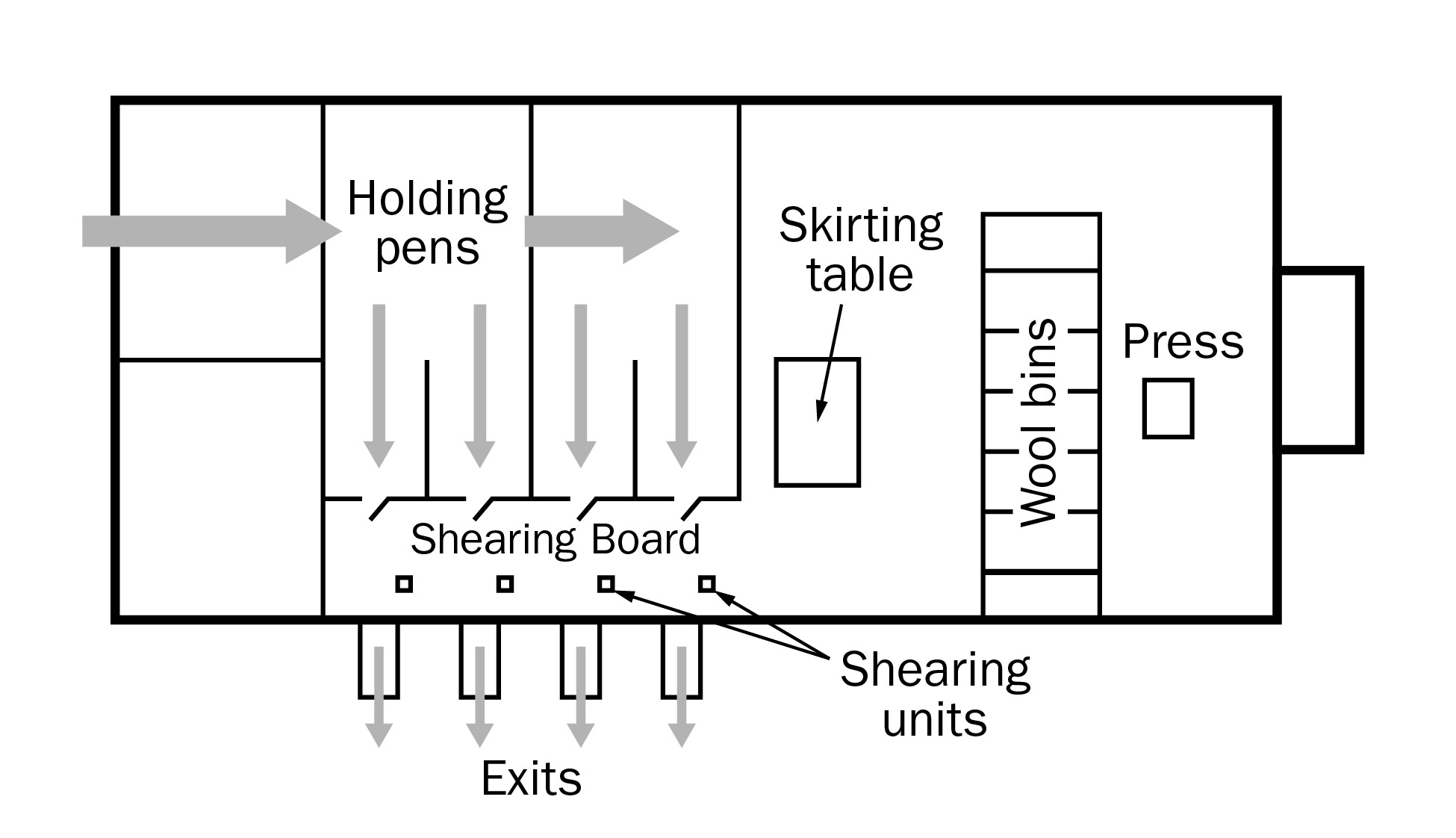
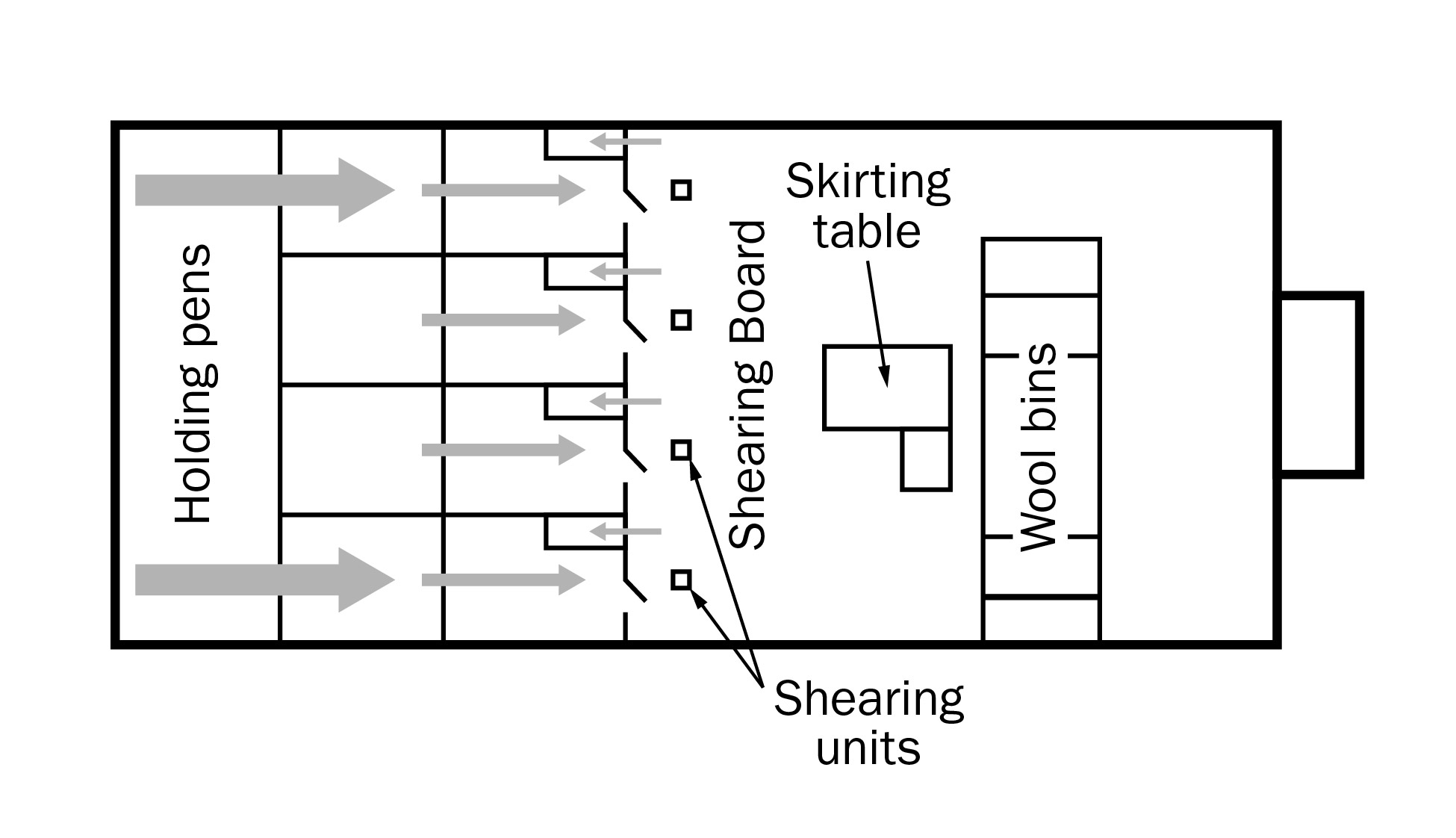
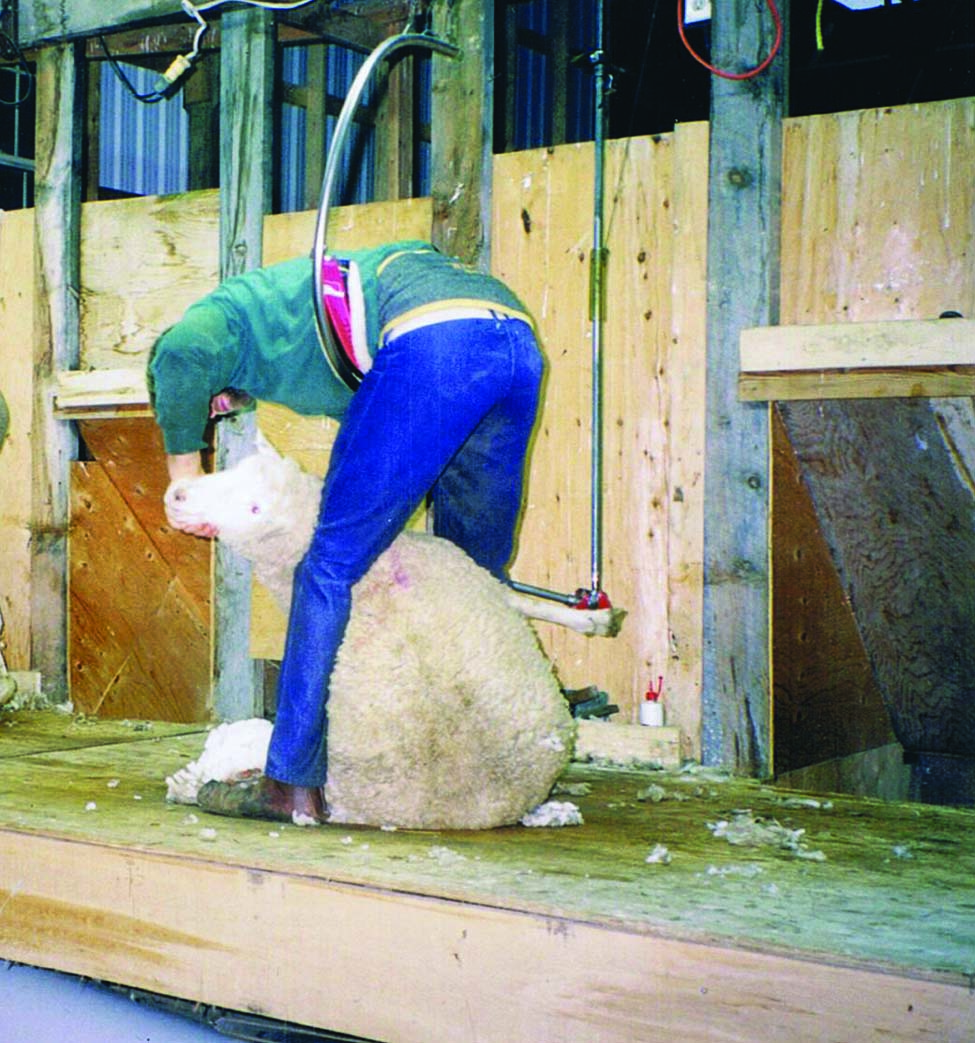
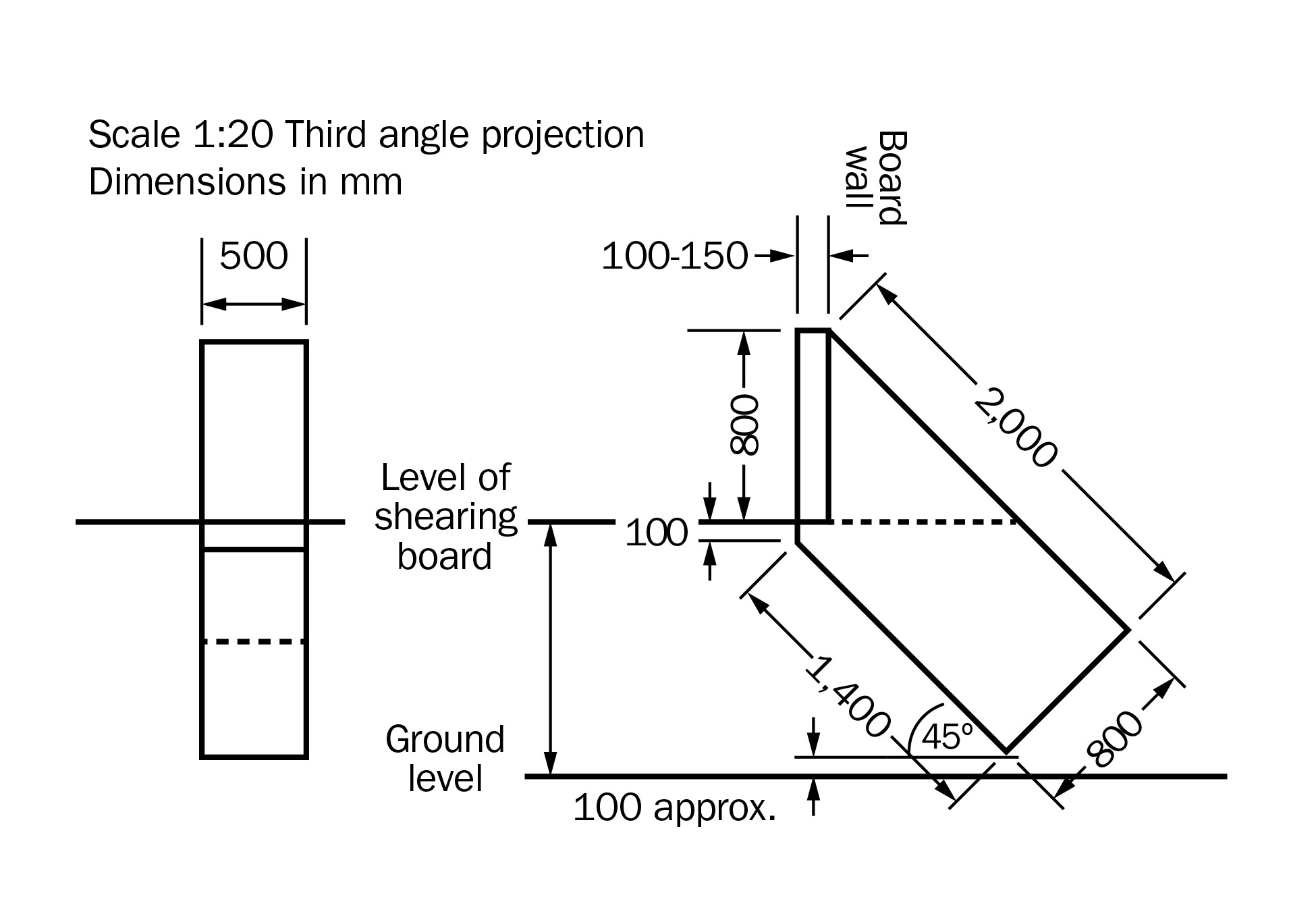

Shearing pen flooring
Because friction can increase labour demands and jeopardize the welfare of sheep when they are dragged to the shearing unit, the condition and materials used for the shearing pen flooring are essential.
In catch pens, align the slats so they run towards the shearer (perpendicular to the gate) to minimize drag resistance and shearer fatigue and to ensure good system throughput.
Research suggests that wood is best, creating 55% less drag friction than steel mesh (see Figure 5). The next best is plastic. Steel mesh has proven to be the worst material for catch pen flooring. Regardless of material, creating a slope toward the door of 1:10 makes the job of moving the sheep 10% easier.
Chutes
Portable shearing chute design
Portable chutes are appropriate for sheep farms with 50-1,000 ewes. For portable shearing chute layouts, see Figures 6, 7 and 8. This design allows the shearer or wool handler to throw the fleece.
If sheep have good flow, two people can ensure a constant supply of unshorn sheep for the shearer and clear the wool away, so the shearer does not have to stop.
A typical 8-hr shearing schedule involves shearing in four 2-hr shifts with breaks in between. Note that with portable chutes, sheep might have to be pushed through.
Advantages
- ensures sheep are close to the work area
- provides the best option for sheep that are bigger than 79 kg (175 lb)
- provides good flow when sheep are familiar with the chute
- many shearers already own a chute
- best option for most Ontario operations
Disadvantages
- poor flow may require an extra person to push animals up
- can interfere with wool pickup
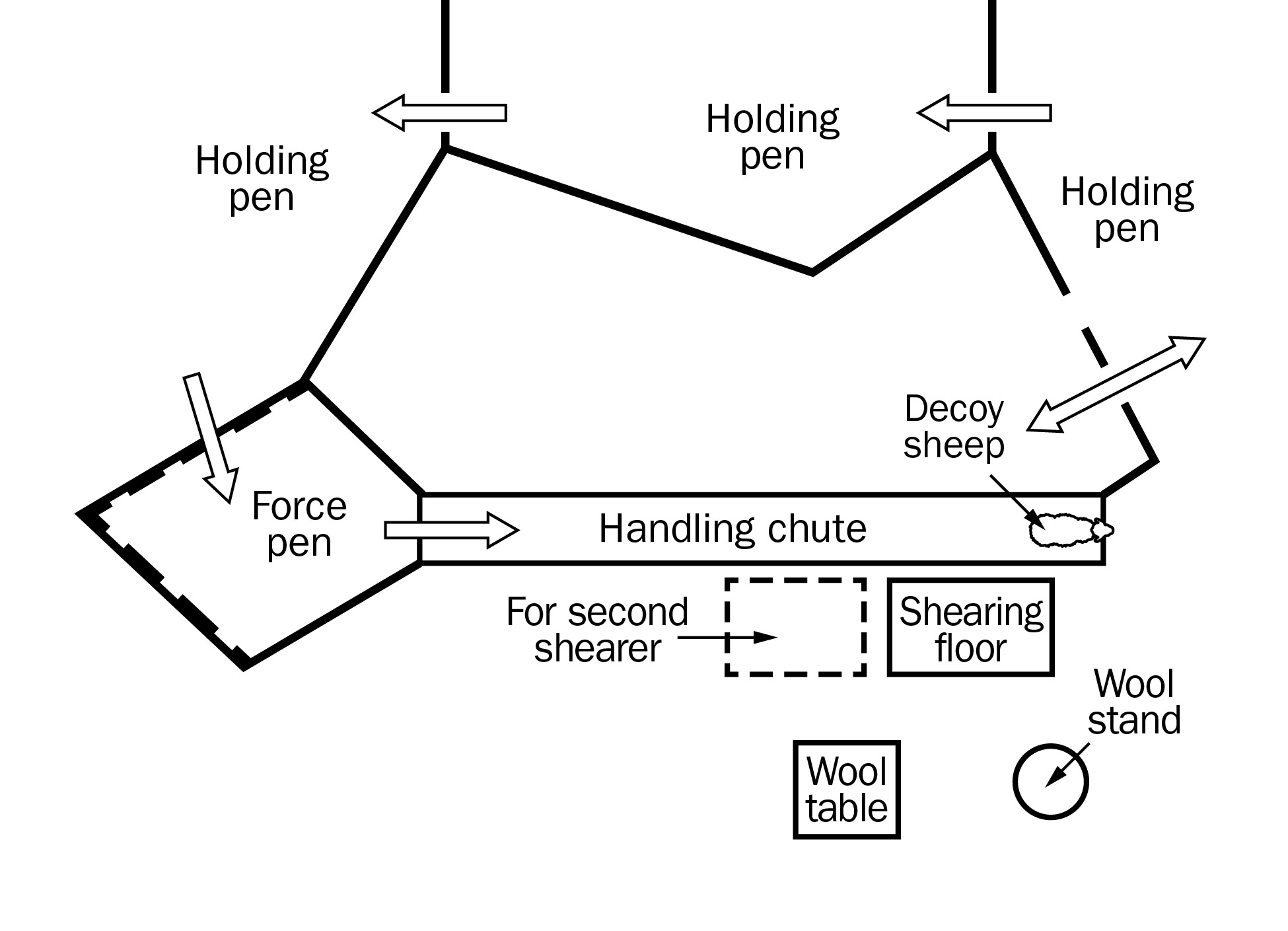
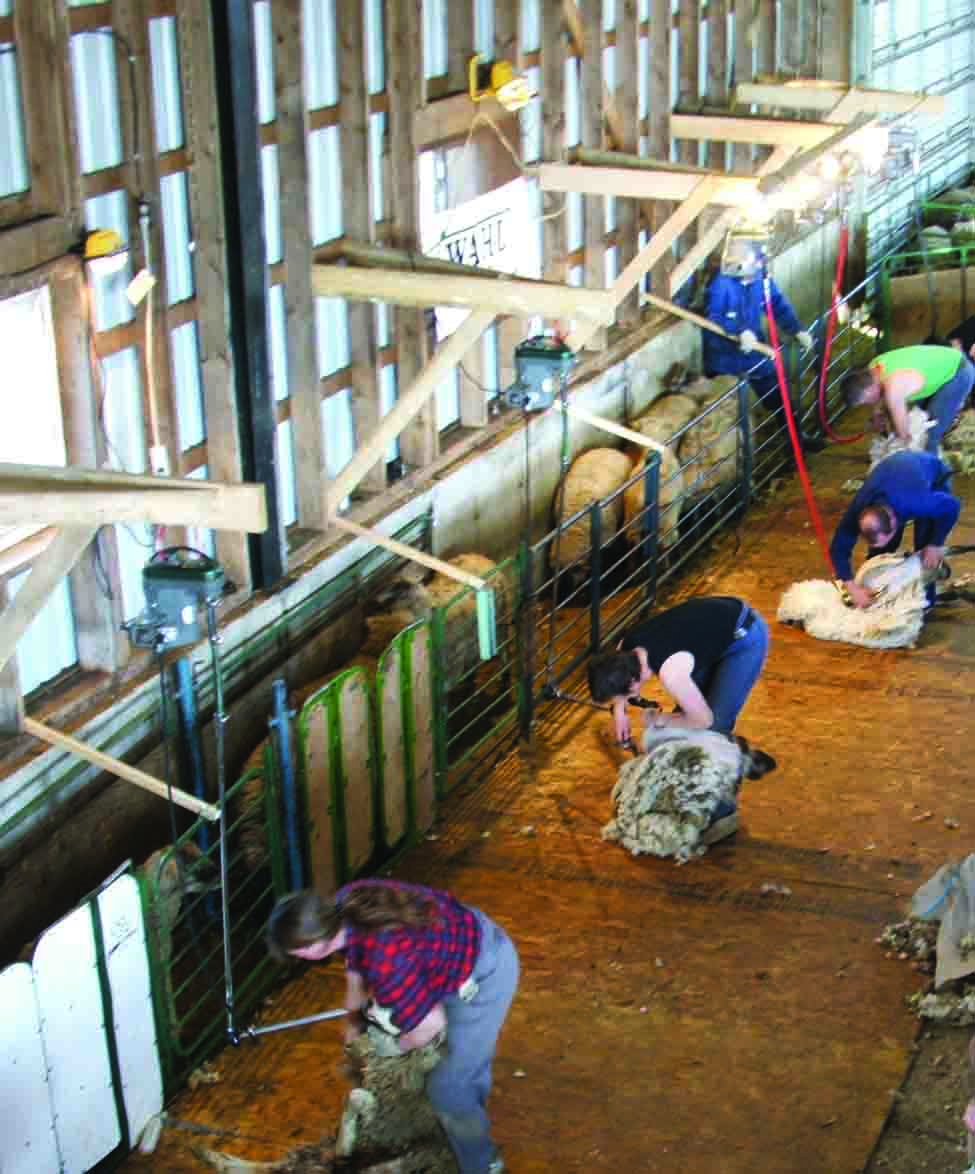

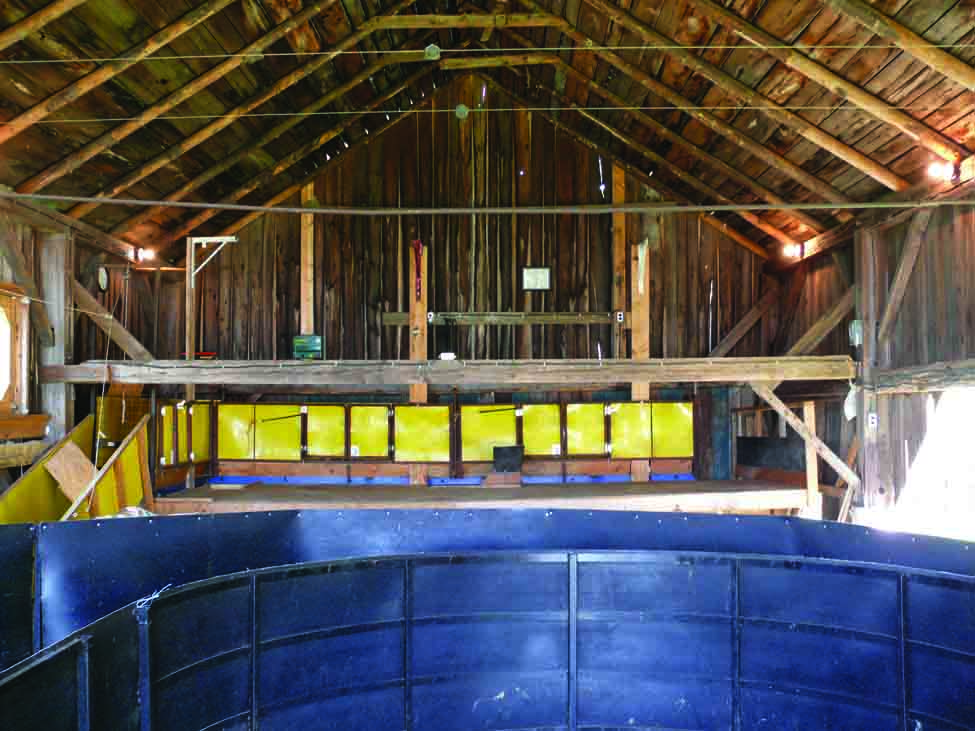
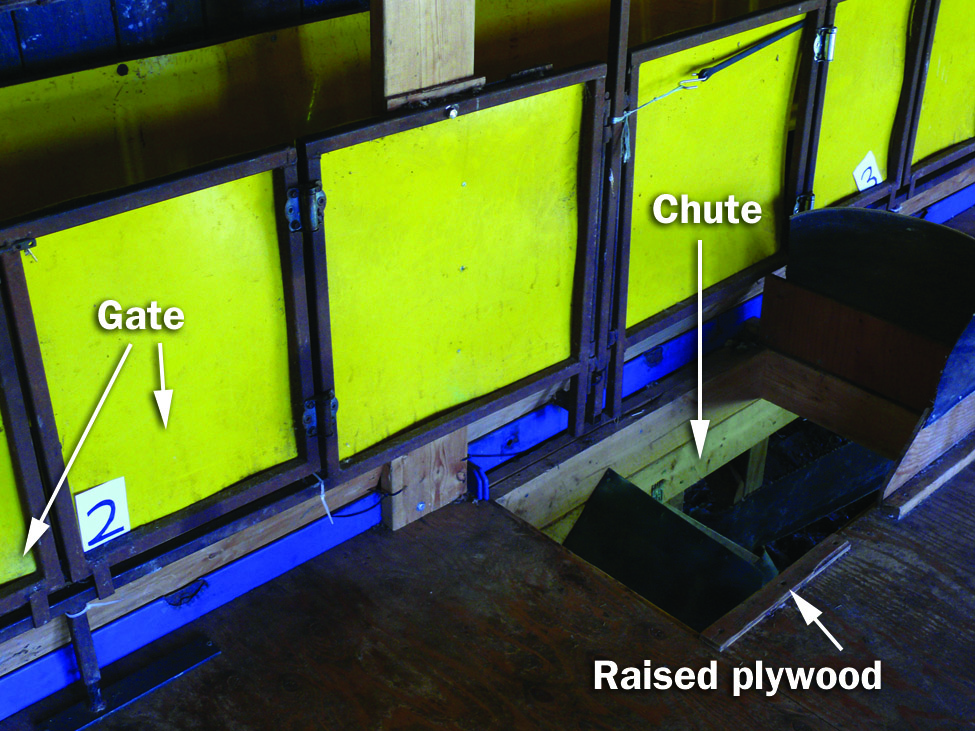
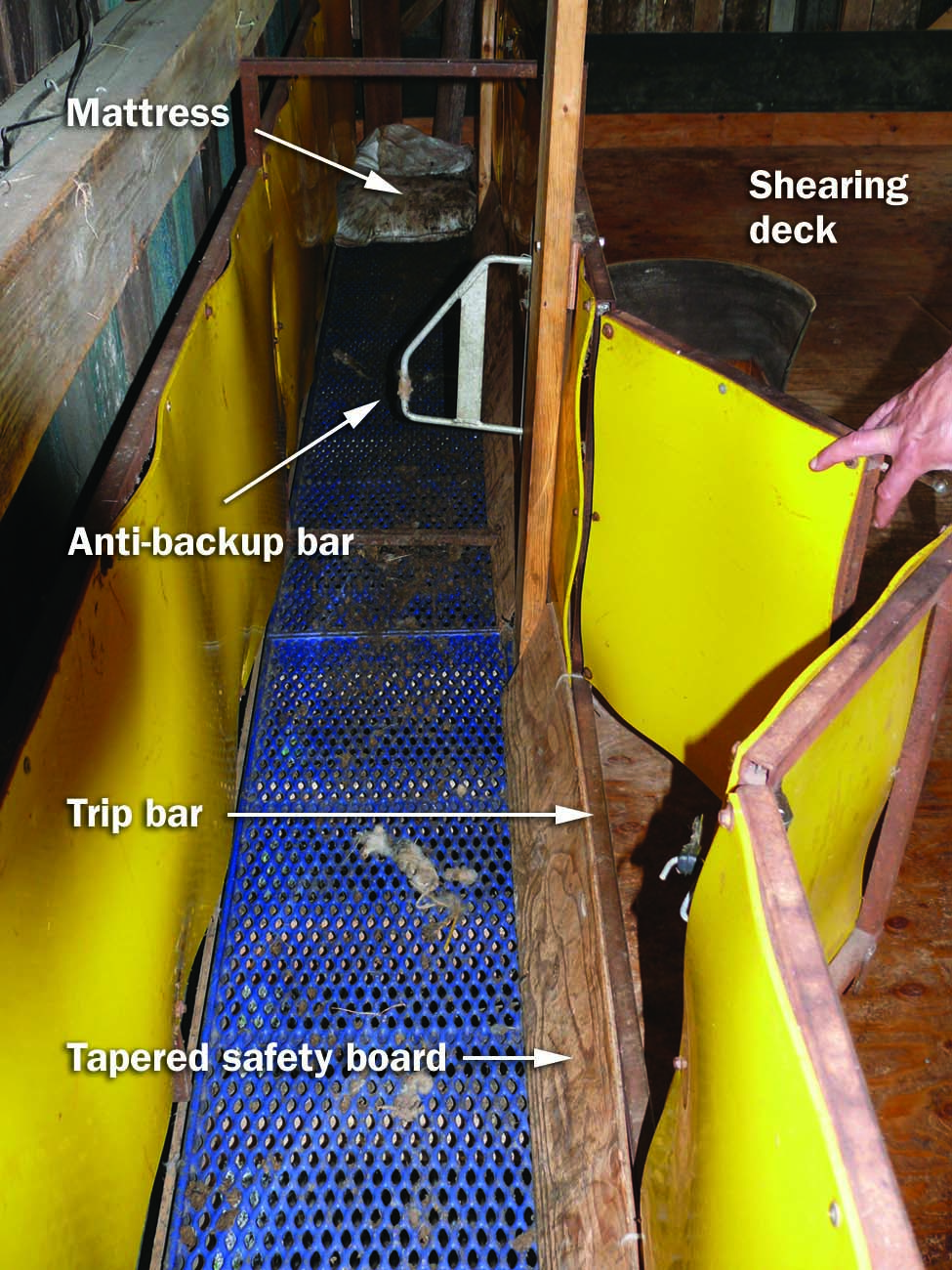
Permanent (raised deck) shearing chutes
A permanent raised chute system combines the principles of the shearing chute with the centre-board catch pen design. See Figures 9-11 for examples.
Advantages
- provides all the advantages of portable chutes
- enables ergonomic wool handling
- sheep and shedhands do not cross paths
Disadvantages
- the design is more complicated than either the chute or centre-board alone
- unlike portable chutes, does not offer flexibility in location
Wool quality
Clean fleece is more attractive to buyers. It also ensures the shearing process goes quicker because combs and cutters stay sharp longer, requiring fewer blade changes. There are many things a producer can do year-round to ensure clean fleece. Out-wintering and rolling the bales out produce extremely clean fleeces. The type of hay feeder will affect the amount of vegetative contamination in the fleece. Basket-type feeders seem to create the most contamination.
Taking precautions during shearing will also help ensure clean fleece. To minimize contamination from dirt, manure and hay material, sweep the shearing board and floor often. Remove the fleece from the shearing board as soon as the shearer releases the sheep. Skirt fleeces on a skirting table to remove portions that are stained, matted or heavily contaminated with hay, burrs or paint. Keep bellies, stained wool and manure tags separate from the main fleece and pack them separately.
Wool handling skirting tables
A wool skirting table (Figure 12) allows second cuts (short cuts of wool) to fall away from the fleece. This improves consistency of length, making the wool more likely to sell for a higher price.
Once the fleece is properly skirted and cleaned, fold it lengthwise, a third over a third. Fold the final third over the top, and then roll it from the tail to the head before packing.
Manual and hydraulic wool presses
There are various options available for packing wool. The system shown in Figure 13 uses old jute wool bags 2.4 m (8 ft) long that are filled using gravity and a packing pole/rod.
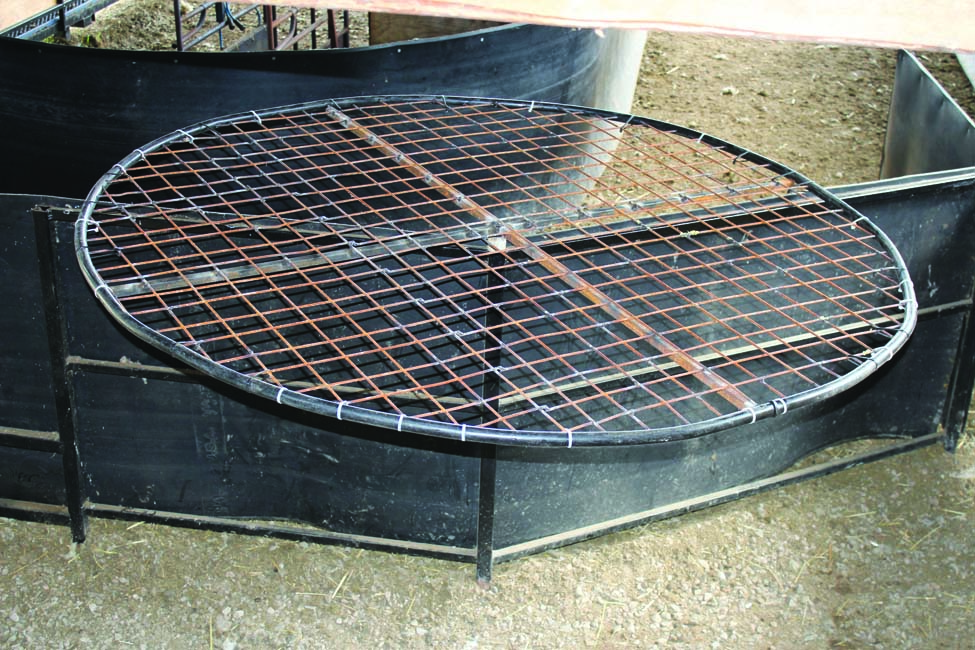
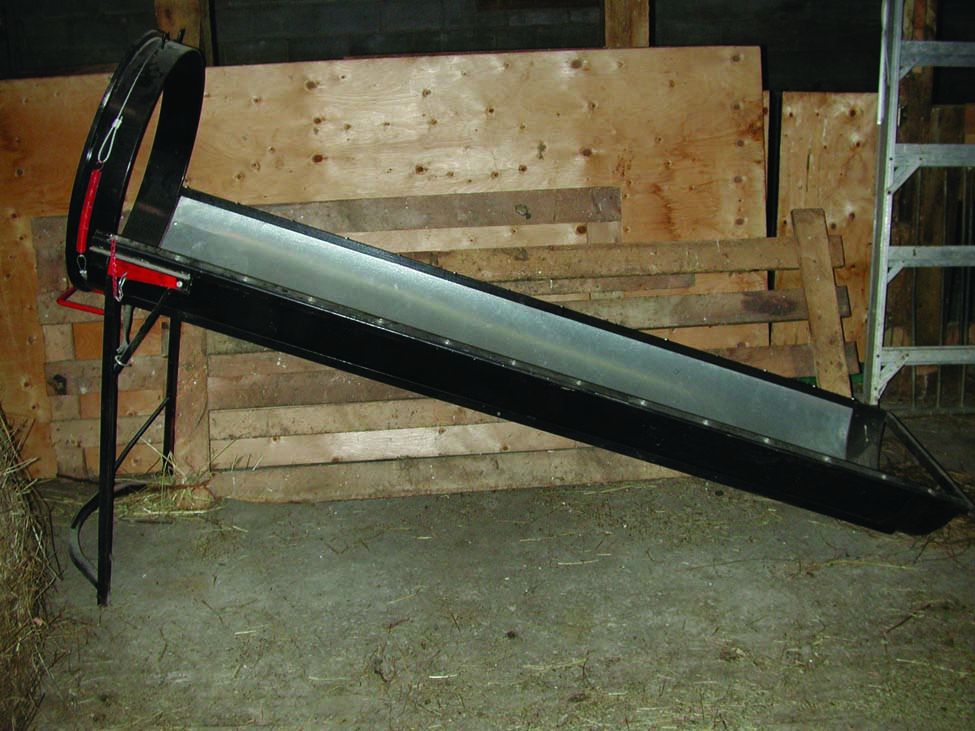
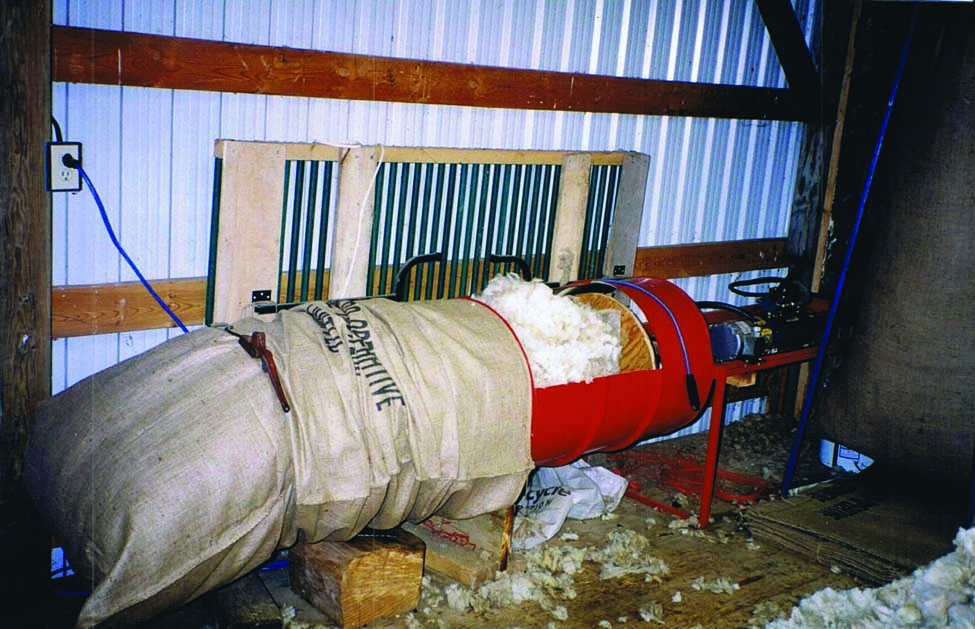
A stress-free shearing day
- Do not attempt to complete other jobs at the same time as shearing. Vaccinating, drenching and foot trimming should be done at another time.
- Do not trim the sheep's feet before shearing. Freshly trimmed feet have sharp edges that can cause serious injury to the shearer.
- If possible, do not store packaged wool outside in direct sunlight. If this is unavoidable, make sure it is for less than one day.
- Do not store packaged wool directly on the ground or on concrete surfaces.
Conclusion
It is the producer's responsibility to be prepared for shearing. Organize activities and facilities so the shearers have minimal problems performing their work. It is important that the producer prepares for shearing day. This includes having a workable facility that allows the process to unfold properly. Too few or too many people in the working area can jeopardize safety, proper wool preparation and shearing, so design facilities accordingly. For any new facility, consider the various design options such as raised decks and shearing chutes to make shearing less labour intensive and less likely to injure shepherds, shearers or sheep.
References
E. Bjergso, Canadian Cooperative Wool Growers Ltd, personal communications.
Code of Practice for Preparation of Wool Clips in the United States . American Wool Council: A Division of the American Sheep Industry Association. 2012.
Sheepyard and Shearing Shed Design . F. Conroy & P. Hanrahan. 1994.
Producing High Quality Consumer Products from Sheep . American Sheep Industry Association.1995.
Sheep Handling and Treating Facilities . Ontario Ministry of Agriculture, Food and Rural Affairs. 1986.
Health and Safety in Shearing . Victorian Workcover Authority. 2001.
This fact sheet was written by Christoph Wand, livestock sustainability specialist, Economic Development Division, OMAFRA, Guelph; Anita O'Brien, Sand Bay Sheep; Don Metheral, professional shearer; Les Jones, OMAFRA sheep consultant; and Avery Richer, University of Guelph.